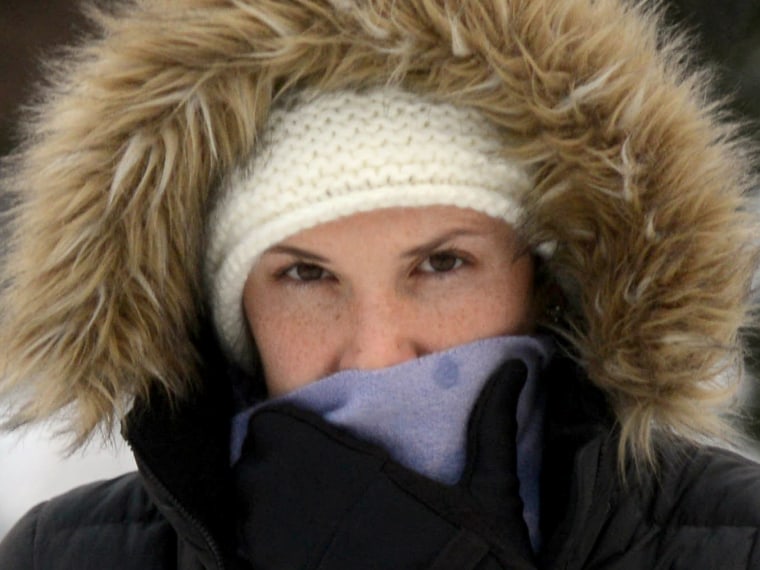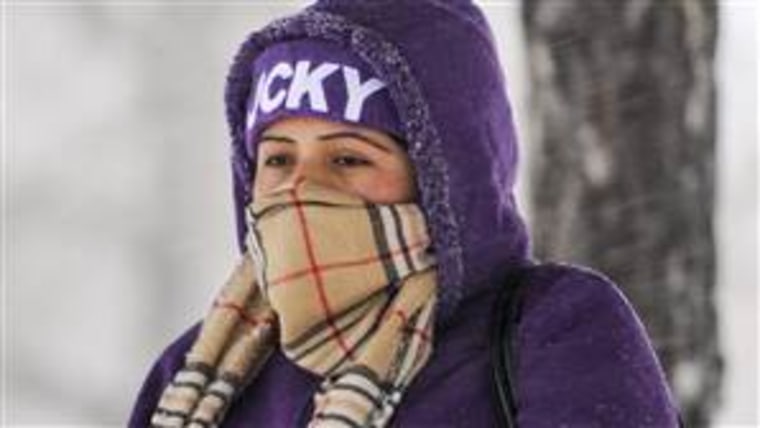As a sharp chill grips much of America, a new study suggests frigid weather might lead to a spike in sniffles and sneezes. But a scientist says there might be a simple, even old-fashioned way, to ward them off: Wear a thick scarf over your nose.

In a study in mice, Yale researchers have found the cold virus thrives in a slightly cooler environment— that is, it does better in the nose than in the lungs, according to a study published in the Proceedings of the National Academy of Sciences Monday.
The reason is twofold, researchers report. First, the common cold virus replicates more rapidly when it exists in surroundings bathed by chillier air. Second, the cells in our airways don't do as good a job of fighting off viruses when we're exposed to lower temperatures.
So, it’s entirely possible that if we can keep our noses toasty, even when wandering out in the wintriest of conditions, we might stave off cold symptoms, says study co-author Akiko Iwasaki, a professor in the department of immunobiology at the Yale School of Medicine.
“Our study didn’t directly test this, but the implication of what we found is that when we inhale cold air into the nasal cavity, the temperature in the nose decreases and that will provide a more permissive temperature for the cold virus to replicate,” Iwasaki says. “Many of us have the cold virus in our noses without symptoms —about 20 to 25 percent of healthy people carry the virus — and if you are one of those people and you go out in the cold, you might develop symptoms.”
If we can keep our noses warm with, say, a scarf we might be less likely to develop cold symptoms. That doesn't mean you won't get sick if you have direct contact with a surface touched by someone with a nasty, snotty cold, but “if you can prevent the airway temperature from getting lower, it’s probably a good thing," Iwasaki says
It’s truly the nose that counts. All those things your mom told you about not going out with wet hair or without a hat, there’s no evidence that they are true, Iwasaki says. That 's because the virus doesn't enter our bodies through our heads.
Try a blanket scarf for a healthier, chicer winter
For the new study, Iwasaki and her colleagues exposed mouse epithelial cells to a mouse-adapted cold virus at two different temperatures: 98.6 degrees (normal body temperature) and 91.4 degrees Fahrenheit. At the colder temperature, the virus replicated more efficiently and produced higher levels of infectious virus. Further, the cells mounted a weaker defense against the virus.
While the study was in mice, Iwasaki said similar mechanisms operate in mice and humans, and the researchers used genetic "knockout" mice that "lack key molecules in the immune system to test their importance in viral defense."
While cold air in the nose might make us more vulnerable to cold symptoms, it’s not the main reason so many of us get sick in the winter, says Dr. Neil Fishman, an associate professor of medicine and infectious disease at the University of Pennsylvania.
After all, you need to have viruses around to develop an infection. And viruses are cyclical, Fishman says.
“The cold virus tends to be present more commonly in the fall and winter,” he says, adding that the same is true of other common viruses, like the flu.
“It’s not clear what causes the seasonality of certain viruses. You may think of influenza occurring during cold weather, but it also occurs in Florida where temperatures are in the 70s and 80s.”
The main reason you get sick is contact with someone else who has the virus, Fishman says. “The more people who have colds or influenza, the more virus there is in the community and the more likely it is that you’ll have contact with someone who has the virus."
